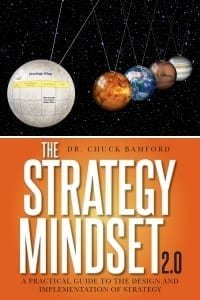How We Prioritize at Sticker Mule

What prioritization is not
Most literature on prioritization is terrible. It leads you to believe prioritization is about time management or how to use to-do lists. This way of thinking neglects that priorities are what make or break businesses.
Consider that Amazon started as a bookstore in 1994 and grew to $147 million within 3 years. Today they employ 500,000 people who handle $200 billion in revenue. They picked the right projects and grew at an extraordinary pace.
Other retailers had different priorities and either failed or are much smaller. Walmart could be Amazon, but they did not prioritize the Internet and now they are worth half as much.
What prioritization is
Prioritization is picking the right tasks to maximize impact. That means finding high impact tasks and avoiding low impact ones. Usually the highest impact tasks are elusive. We don’t know the highest impact projects we could pursue right now.
Prioritization might sound stressful, but it’s not. Most tasks won’t affect us. Consequently, we shouldn’t stress about the backlog of tasks we “need” to do. We need to keep our minds free to pursue high impact ideas, when they present themselves, by neglecting low impact ones.
Prioritization categories
It’s unproductive to precisely categorize every task, but it’s useful to roughly classify them in your mind. Prioritization improves with practice and thinking about these categories helps us improve.
- Growth vs. costs – It’s generally better to use our time to grow revenue than reduce costs. Time is finite. Cash isn’t.
- High vs. low impact – High impact is better, but completing lots of low impact tasks can be worthwhile if we complete them quickly.
- Enduring vs. temporary – Tasks that provide enduring value are preferable to those that deliver value temporarily.
- Definite vs. potential – It’s better to pursue improvements with definite benefits than those with potential.
- Short vs. long term results – Quick wins are preferable, but you can build competitive advantage pursuing ideas that yield results in the long term since others tend to neglect them.
- Related vs. unrelated tasks – Sometimes related tasks are completed more efficiently when grouped together. For this reason, we often do low impact tasks that pair well with high impact ones.
- Estimated time to complete – All else equal, tasks that can be completed faster are preferable.
Questions
Ask yourself these questions periodically to improve your ability to prioritize:
- What’s the most impactful thing you can work on?
- Did you correctly identify the problems you are facing?
- Do you know the most important problem to solve next?
- Can you replace any planned tasks with better ones?
- Can you delete any especially low impact tasks entirely?
Conclusion
We aim to embed a passion for prioritization into our culture. If you think similarly and want to join our global team, we are hiring.
About the Author
Anthony Constantino is the cofounder and CEO of Sticker Mule. A factory guy at heart, Anthony oversees an operation that spans 16 countries in 4 continents with customers including Google, Facebook, Twitter and many of the world’s best brands. He’s determined to make Sticker Mule, already the Internet’s favorite printing company, the absolute best place to work and shop.


 For as long as the word “strategy” has been in use it has been represented as something mythical. Many seminal articles have been written that describe what business strategy is, what it’s not, how to know if you have a strategy, how to test your strategy – and the list goes on. Even for those companies that understand the process, some do it very well and some do it very poorly.
For as long as the word “strategy” has been in use it has been represented as something mythical. Many seminal articles have been written that describe what business strategy is, what it’s not, how to know if you have a strategy, how to test your strategy – and the list goes on. Even for those companies that understand the process, some do it very well and some do it very poorly. Chuck Bamford, Ph.D., is the Managing Partner of Bamford Associates, LLC, a strategy consulting firm that has worked with hundreds of organizations as they develop and implement a compelling strategy. He is an Adjunct Professor of Strategy at Duke University (Fuqua) and the University of Notre Dame (Mendoza), and was previously a professor at Texas Christian University and the University of Richmond among others. He has written seven books. His latest book is
Chuck Bamford, Ph.D., is the Managing Partner of Bamford Associates, LLC, a strategy consulting firm that has worked with hundreds of organizations as they develop and implement a compelling strategy. He is an Adjunct Professor of Strategy at Duke University (Fuqua) and the University of Notre Dame (Mendoza), and was previously a professor at Texas Christian University and the University of Richmond among others. He has written seven books. His latest book is 
 A healthy diet doesn’t need to be expensive and taste bland.
A healthy diet doesn’t need to be expensive and taste bland. Laureen Asseo is only 27-years-old, yet she has become a pioneer in leading the nation’s organic food craze. She’s the CEO and founder of LA-based
Laureen Asseo is only 27-years-old, yet she has become a pioneer in leading the nation’s organic food craze. She’s the CEO and founder of LA-based